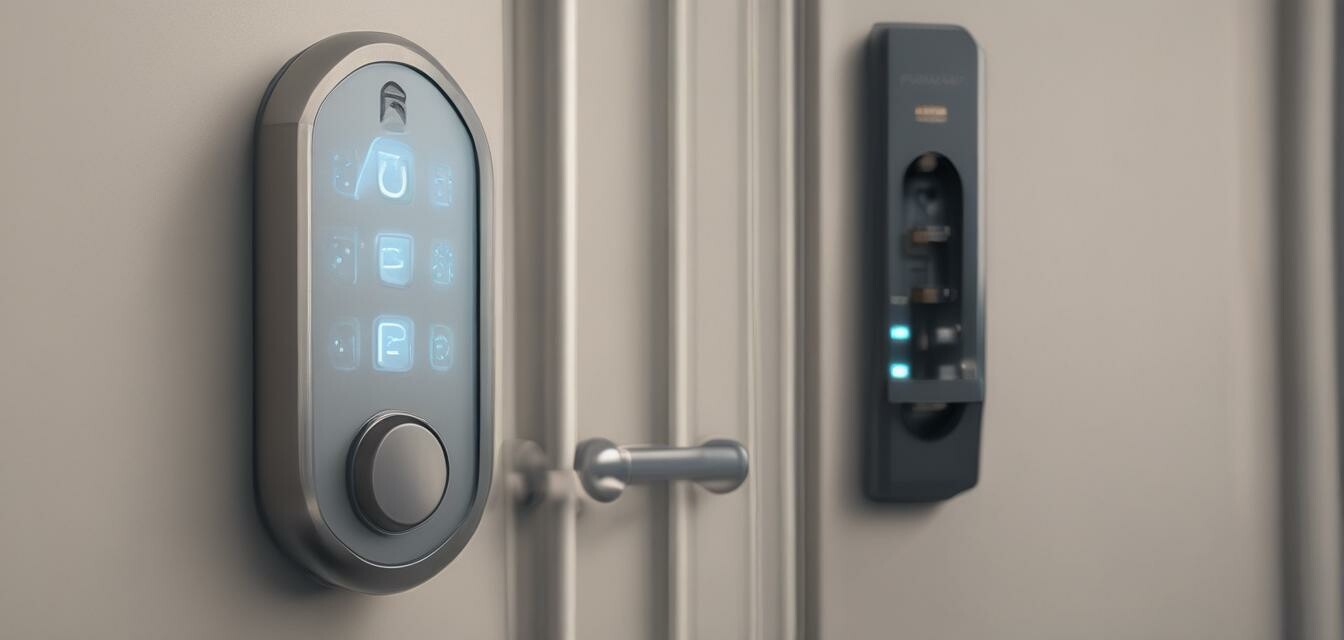
The future of smart locks: What to expect in 2025
Key Takeaways
- Smart locks will feature enhanced security through AI and machine learning.
- Improved user interfaces will offer seamless integration with other smart home devices.
- Advancements in biometrics and encryption technologies will boost safety.
- Homeowners will benefit from increased connectivity and automation capabilities.
- Regulatory changes may influence smart lock standards and compliance.
The world of smart locks is evolving rapidly, and as we approach 2025, several exciting trends are emerging. Homeowners are seeking enhanced security features and greater convenience, and manufacturers are responding with innovative designs and functionalities. In this article, we will explore what you can expect from smart lock technology in 2025, emphasizing advancements, user interfaces, security features, and compliance regulations.
Emerging trends in smart lock technology
| Trend | Description |
|---|---|
| AI and machine learning | Smart locks will leverage AI to predict and recognize user behavior, enhancing security and usability. |
| Biometric authentication | Increased use of fingerprint, facial recognition, and retinal scanning for secure access. |
| Increased connectivity | Smart locks will integrate more seamlessly with other smart home devices, offering users greater control. |
| Mobile app enhancements | Smart lock apps will become more user-friendly and feature-rich, making management easier. |
| Regulatory compliance | Changes in regulations will push manufacturers to adopt stricter security standards. |
Enhanced security features
The growth of smart lock technology is largely driven by demand for enhanced security. Homeowners want to feel safe and secure, and advancements in technology are paving the way for more reliable systems. Here are some expected improvements:
- AI-driven monitoring: AI will analyze alerts and patterns to detect suspicious activities, alerting homeowners proactively.
- Encrypted connections: Advanced encryption protocols will safeguard against hacking, securing user data and access.
- Two-factor authentication: Expect the integration of two-factor authentication to manage access control better.
Improved user interfaces
As smart home technology evolves, user interfaces must adapt to keep pace with new usability standards. Here’s what you can anticipate in smart lock interfaces:
- Intuitive design: User interfaces will be more intuitive, making navigation easier and requiring less training.
- Voice control: Voice-activated commands will enable users to manage locks hands-free and integrate with home assistants.
- Customizable features: Users will have the ability to personalize settings and alerts based on their preferences.
Compatibility with smart home ecosystems
Not only will smart locks offer their unique features, but they will also work seamlessly with other smart home devices. Homeowners will benefit from the following:
| Feature | Smart Lock A | Smart Lock B |
|---|---|---|
| Compatibility | Works with Amazon Alexa | Works with Google Assistant |
| Integration with cameras | Yes | Yes |
| Geofencing capabilities | Yes | No |
| Remote access management | Yes | Limited |
Preserving user privacy and data security
As smart locks become increasingly sophisticated, concern for user privacy keeps rising. Manufacturers are focusing on the following to preserve user interests:
- Audits and compliance: Regular security audits to identify vulnerabilities in systems and procedures.
- Transparent policies: Clear user agreements outlining the handling of data and privacy practices.
Regulatory changes on the horizon
Changes in regulations may significantly impact the smart lock industry. Here’s what to watch for:
- Stricter security standards: Mandatory compliance with new security protocols to thwart hacking and data breaches.
- Consumer privacy laws: Enhanced protections for consumer data in light of increasing concerns over privacy violations.
Conclusion
Looking ahead to 2025, it’s clear that smart locks will evolve in response to the growing demands for security, usability, and privacy. As homeowners continue to invest in smart home technology, manufacturers must prioritize innovation while addressing potential concerns. By keeping an eye on emerging trends and regulatory developments, users can make informed decisions about the best smart lock solutions for their homes.
Pros
- User-friendly interfaces will enhance consumer experience.
- Improved security features will offer peace of mind.
- Seamless integration with smart home devices will boost convenience.
Cons
- Potential security vulnerabilities if not regularly updated.
- Dependence on technology may exclude less tech-savvy users.
- Regulatory changes could complicate product compliance.
Stay updated
For those curious about the latest advancements and trends in smart home security systems, consider exploring our News & Trends category, where we cover developments and innovations that enhance home safety.
